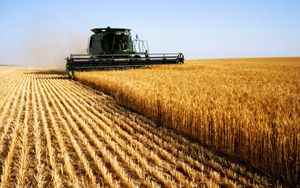(Finance) – The cereals will be ready for harvesting in June, but with each passing week of war it pays off more and more Ukrainian farmers are unlikely to be able to harvest them and deliver them to the market. With the ongoing conflict, men enlisted in the army and the rest of the families on the run, access to the camps is difficult, as is the breeding of livestock and poultry or the production of fruit and vegetables. Furthermore, i Ukrainian ports on the Black Sea are closed and, even if the internal transport infrastructure remains intact, the transport of grain by rail is impossible due to the lack of an operational rail system. This is the nightmare scenario for what is called the “granary of Europe” and whose problems according to the United Nations could increase global food costs by up to 22%.
A new report from FAO, the Food and Agriculture Organization of the United Nations, analyzes the importance of Ukraine and Russia for global agricultural markets and the risks associated with the current conflict. Both countries are net exporters of agricultural products and play leading roles in sourcing global food and fertilizer markets, where exportable supplies are often concentrated in a handful of countries. “This concentration could expose these markets to greater vulnerability to shocks and volatility,” FAO points out. In 2021, the Russian Federation or Ukraine (or both) ranked up among the world’s top three exporters of wheat, maize, rapeseed, sunflower seeds and sunflower oilwhile the country led by Vladimir Putin was also the world’s leading exporter of fertilizers nitrogen and the second largest supplier of potassium and phosphoric fertilizers.
FAO simulations that measure the potential impacts of a sudden and drastic reduction in exports of cereals and sunflower seeds from the two countries indicate that these shortcomings could only be partially offset by alternative sources during the 2022/23 marketing season. “The ability of many of these alternatives to increase production and shipments may be limited by high production input costs – it is stressed – It is worrying that the resulting global supply gap could increase international prices of food and feed from 8 to 22% above the already high levels “.
If the conflict keeps the prices of the crude oil at high levels and extends the two countries’ reduced participation in global exports beyond the 2022/23 season, it would remain a significant supply gap in global markets wheat and sunflower seeds, although alternative producing countries expand their production in response to higher prices. This would keep international prices high well above base levels.
“The intensity and duration of the conflict remain uncertain – commented FAO Director General Qu Dongyu – The probable disruption of agricultural activities of these two main exporters of basic raw materials could seriously aggravate food insecurity globally, when the international prices of food products and inputs are already high and volatile. The conflict could also limit agricultural production and purchasing power in Ukraine, leading to greater food insecurity at the local level. ”
